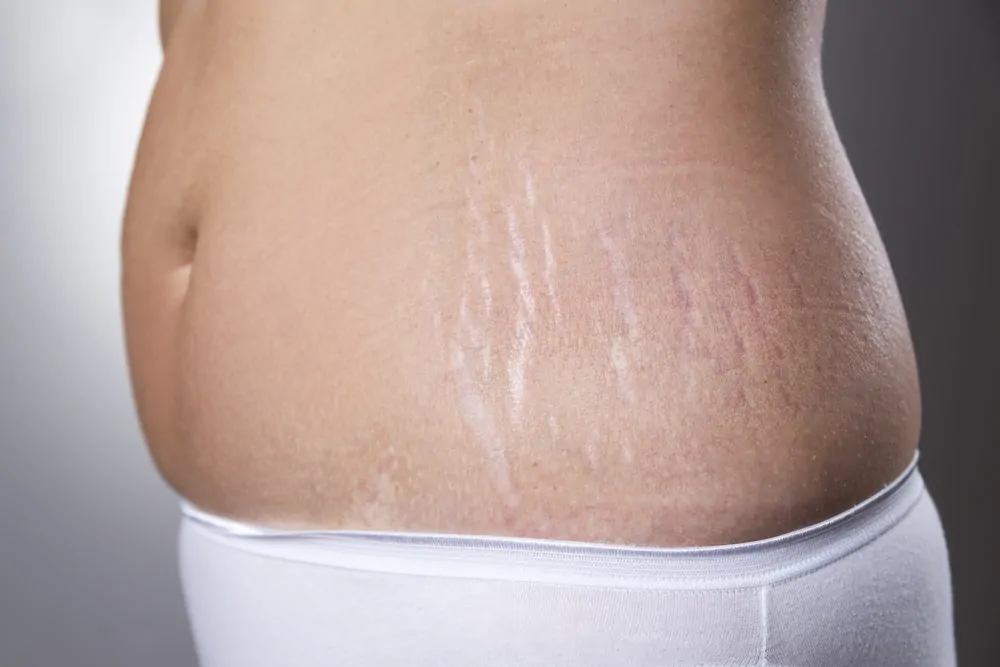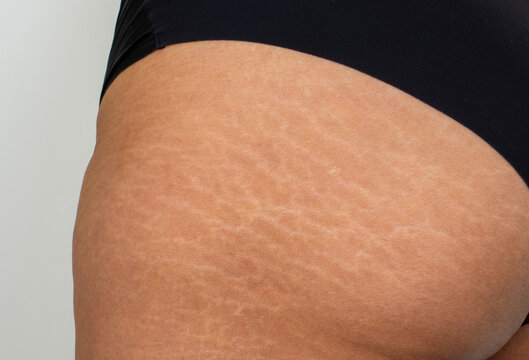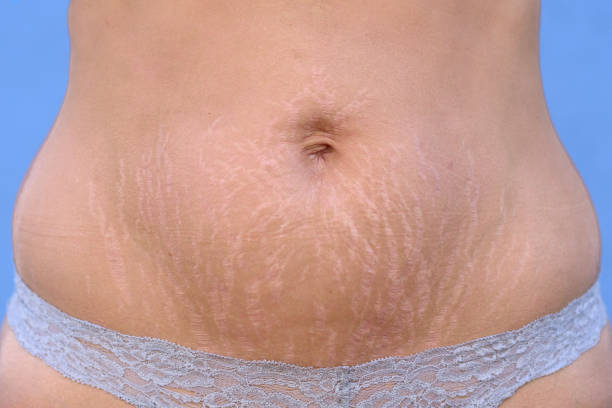Stretch Marks
Stretch marks, also known as striae, are long, narrow streaks or lines that appear on the skin. They are a form of scarring that occurs when the skin is stretched beyond its elastic limit, causing the underlying connective tissues to tear. Stretch marks commonly appear on areas of the body where rapid growth or weight gain occurs, such as the abdomen, breasts, thighs, hips, and buttocks. Understanding the different types and causes of stretch marks can provide insights into their development and potential treatment options.
Striae Rubrae
Striae rubrae, also known as red or purple stretch marks, are fresh stretch marks that appear as raised or inflamed streaks on the skin. They are typically associated with recent stretching of the skin and represent the early stage of stretch mark formation. The reddish or purplish color is due to inflammation and blood vessels showing through the damaged skin. Striae rubrae are usually accompanied by itching or irritation.
Striae Albae
Striae albae, also referred to as white or silver stretch marks, are older stretch marks that have faded and lost their initial red or purple color. They appear as pale, indented streaks on the skin and are characterized by a loss of pigmentation. Striae albae indicate that the stretch marks have undergone some degree of healing and have become less inflamed. However, they may still be visible and can have a texture that is different from the surrounding skin.
Causes of Stretch Marks
The primary cause of stretch marks is the stretching and tearing of the dermis, the middle layer of the skin. This stretching can be triggered by various factors, including rapid growth during puberty, pregnancy, weight gain or loss, and muscle-building activities. Hormonal changes, such as increased levels of cortisone hormone during pregnancy or certain medical conditions, can also weaken the skin’s elasticity and make it more prone to developing stretch marks.
Genetic Predisposition
Genetic factors can play a role in determining an individual’s susceptibility to stretch marks. Some people may have a genetic predisposition to developing stretch marks due to differences in their skin’s structure, elasticity, and collagen production. If a person has a family history of stretch marks, they may be more likely to experience them themselves. However, it is important to note that not everyone with a genetic predisposition will develop stretch marks, as environmental and lifestyle factors also play a significant role.
Preventing stretch marks can be challenging, but certain measures may help reduce their appearance. Maintaining a healthy weight, staying hydrated, and gradually increasing physical activity can help promote skin elasticity. Applying moisturisers and oils to the skin may also help keep it hydrated and supple.
While stretch marks cannot be completely eliminated, the following treatments may assist in fading their appearance
- Pico Genesis FX
- Omnilux LED Light Therapy
- Potenza RF Needling




